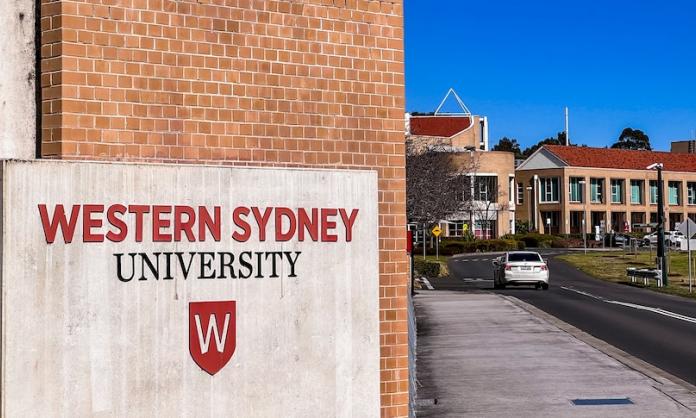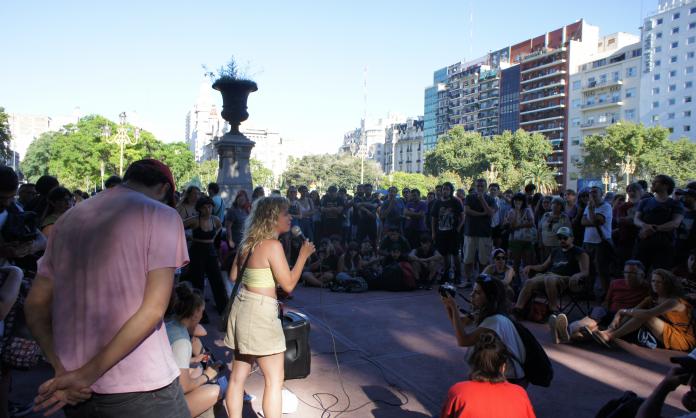Major pay cuts and worse conditions are part of a university deal that National Tertiary Education Union officials are touting as the way forward for the whole sector.
The deal at Western Sydney University will impose a cut in real wage rates of more than 7.7 percent on most of its staff in the year to June 2023, as wage rises fail to keep pace with the Reserve Bank’s estimates of inflation. That’s the case for all academics, including casuals.
A senior lecturer, already down more than $5,700 in June this year, will be down more than $11,300 next year and down almost $12,000 in 2024.
The lowest paid professional staff (those in levels one to five of the HEW staff classification) will get a $1,000 annual increase to their rate. But this results in a real pay cut of between 5.8 and 6.5 percent by June next year. Similarly, a $500 lift in rates for staff on levels six and seven will leave them more than 7 percent worse off.
A widely reported Reserve Bank announcement, more than a month before the in-principle deal went to a vote by members, made it clear that the union’s initial pay claim would mean real wage cuts for most Western Sydney workers by the end of this year. But union officials still decided to stick with the 5 percent claim and even to discount it.
Minimum research time for academics will be reduced and their marking loads increased. In negotiations with Western Sydney University management, union officials dropped demands that casual workers get sick leave and the same rate of superannuation as continuing workers.
The current enterprise bargaining round at Australian universities is an opportunity to defend and advance members’ pay and conditions through sustained strike action. NTEU leaders are not only squandering the chance to make advances for the workers they are supposed to represent; they are also trying to shore up their own positions within the bureaucracy by selling a dubious path forward to members.
The secretary of the NSW division, Damien Cahill, leapt to proclaim the in-principle deal at Western Sydney a model for the whole union, even before all its details had been worked out. But it is certain that the agreement trades lower real wages and declines in conditions for minor or questionable “concessions” from management, especially on jobs. Cahill is the incumbent leadership’s candidate for national secretary in union elections now under way. The “win” he claims at Western Sydney is part of his election campaign.
Under pressure from NTEU Fightback, a rank-and-file activist group within the union, the officials bumped up the mandatory pay claim to inflation plus 1.5 percent. Several NTEU branches decided that they want inflation plus 2.5 percent, in line with Fightback’s proposal.
Officials insisted that plus 1.5 percent was a ceiling, not a floor. But now the union’s leaders have approved big cuts in real pay for workers at Western Sydney, while the university increased its profits from $22 million in 2020 to $143 million last year.
The deal also appears to cut the minimum research fraction for academics from 25 to just 20 percent, and their marking load will rise from 135 to 150 students per session.
Top of the list of advances claimed by NTEU leaders is “150 new permanent jobs”. Western Sydney slashed the full-time equivalent of 343 continuing and fixed-term jobs from 2019 to 2021. So the 150 full-time equivalent “new” jobs aren’t so new.
University managements have been sacking longer serving workers because they’re generally on higher classifications and increments. This keeps a lid on retirement payouts. Cheaper young workers can then be hired. Recent mass sackings at many universities went beyond any long-term workforce reductions previously planned by bosses. So there was always going to be more hiring once the COVID panic had passed.
Casual workers at Western Sydney are supposed to get these 150 jobs, which are supposed to be permanent roles. But under the deal, existing casuals will simply be able to apply first for the jobs. Management will decide whether any are appointed. And, for three years, these jobs will not have “regular research allocations”.
Real paths to continuing employment for casuals are possible. For example, the union could demand that workers automatically get permanent status if they have been employed casually for more than a specified number of weeks over a given time.
The union instead dropped demands to improve casuals’ conditions at cost to the university—another way of pushing management to reduce casual employment.
The announced “25 percent reduction in casual academic labour” sounds pretty good. But this seems to be a purely aspirational rather than enforceable commitment. Enterprise agreements in higher education are littered with non-enforceable aspirational “targets” and “goals” that are never met.
Neither this nor other important matters are spelled out in the “heads of agreement” or “summary of key clauses”, which were all that unionists at Western Sydney received before the in-principle vote on the deal. Not even these summaries were made available to the NTEU’s whole membership when the “win” was declared far and wide.
Does management have escape clauses, as there are for “professional staff work from home rights” and “real restructure protections”?
Professional workers will be able to work from home for two days a week, but supervisors will be able to knock back a “request” that they decide “is unreasonable and ... would unduly disrupt the work of the unit”. Workers won’t be subject to more than one threat of being made redundant during the agreement “subject to any exceptional circumstances”.
What else has been “gained” at Western Sydney in return for pay cuts?
There’s a provision to ensure that when reorganisations abolish positions, the remaining workers won’t have higher workloads. Again, it looks good—but there’s nothing to indicate that management will be forced to fill vacant positions.
Maximum academic teaching time will be reduced by one hour per week. But managers can prevent this reduction if they insist on measuring workloads not in terms of hours, but in terms of “equivalent full-time student load”, whose maximum limit is unchanged.
The provision for converting fixed-term appointments to ongoing jobs has been firmed up a little, but the difficult requirement of three years of continuous employment prior to conversion has not been changed.
There are also changes that are worthwhile but cost management little or nothing: superannuation for workers on unpaid parental leave; gender affirmation leave; five minutes from the union during staff induction sessions; an Indigenous employment target of 3 percent of the workforce (again without any mention of an enforcement mechanism); retention of rights to Indigenous intellectual property.
The NTEU branch at Western Sydney University is relatively weak. And the deal there follows a token half-day strike. In contrast, the strongest branch in the country is at the University of Sydney, where workers generally have the best pay and conditions. There have been three days of strikes, and further action is planned, over an ambitious set of union demands that would reduce workloads, improve job security and increase real wages.
Unfortunately, according to the student newspaper at the university, union branch president Nick Riemer thinks that the Western Sydney deal “should reset [enterprise agreement] negotiations everywhere”. That would be a huge retreat for workers across the sector and especially at Sydney University. Management at Western Sydney was only too happy to accept the NTEU officials’ capitulation, even if it was clad in the rhetoric of “union win”.
All this continues the colossal sell-out of pay and conditions that the same national NTEU leadership team came up with in the first half of 2020 when faced with widespread job cuts that university managers blamed on COVID. The so-called Jobs Protection Framework was dropped because of a widespread revolt by rank-and-file unionists, which also led most university bosses to rethink the advantages of such an industry-wide deal.
Where local versions of the Jobs Protection Framework were pushed through by the joint action of management and union officials, pay was cut and jobs weren’t protected; they were slashed. That happened at Latrobe and Monash universities, at the University of Western Australia—and at Western Sydney University.
Linking the Jobs Protection Framework with the latest deal is, in the boastful words of the Western Sydney NTEU branch president, “something strange and remarkable”. But this isn’t because it is heroic; it’s because union leaders continue to sacrifice their members’ livelihoods to management’s bottom line.
No wonder NTEU officials looked to Western Sydney University this time around for a dubious “win” and a way out of undertaking the kind of industrial campaigns that could improve members’ lives but which require massive organising efforts.
This article was updated on 20 August.











